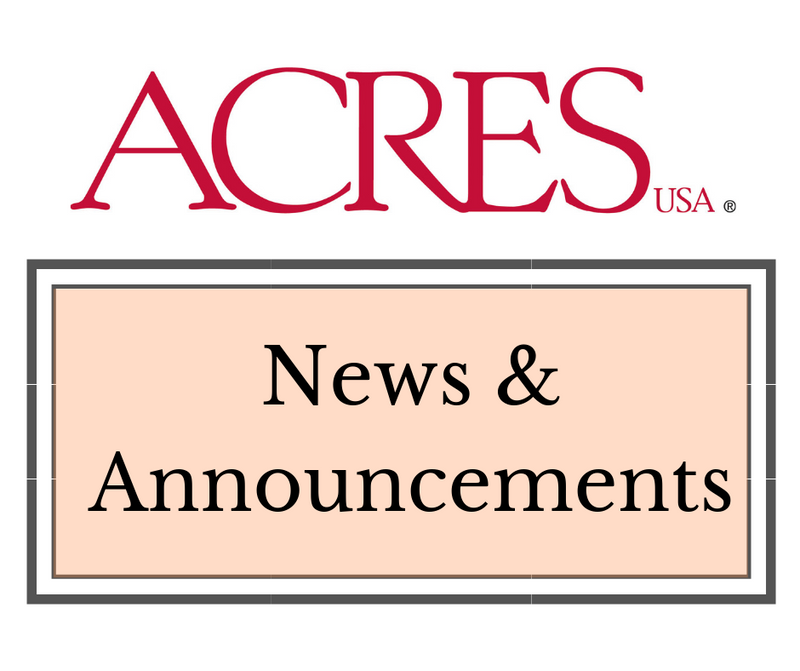 As we head into the holiday season, we turn our thoughts toward gratitude for the bountiful harvest and ways to make next year even more fruitful on our farms, ranches and homesteads.
As we head into the holiday season, we turn our thoughts toward gratitude for the bountiful harvest and ways to make next year even more fruitful on our farms, ranches and homesteads.
We hope you enjoy all the articles from our November 2018 issue, complete with features by Virginia farmer Joel Salatin on leasing land; a double look at the state of organic dairying by Tracy Frisch and Maria Dimengo revealing what farmers are doing to find new revenue streams; ways to support dung beetles on your pastures by Spencer Smith; and programs helping veterans-turned-farmers across the country.
You’ll also find articles on social media marketing for the farm, housing considerations for raising meat rabbits, growing buckwheat, a chef revitalizing Native American indigenous foodways, and much more.
Here’s an excerpt from the lead feature article by Joel Salatin on leasing land:
A lease is a partnership, and you need buy-in from the landlord. Once you have an interested landowner, you must discuss expectations. Every landowner has a hot button. For one, it may be thistles. For another, it may be lane maintenance. Fences, visitors, landscape appearance — these all enter into the discussions.
Always remember that managing land is an incredible privilege. Few people get to viscerally touch land anymore; to do so is an honor. Treat the land and the landowner that way and the respect will show through the discussions.
We have one landowner who doesn’t want any animals there during hunting season. The farm is his getaway from a high-pressure business, and he doesn’t want his hunting encumbered with electric fence gates and animals when he seeks his solitude. That’s not always easy to accommodate, but it’s certainly doable.
Often in farming, some non-portable capitalization may be required. That’s always ticklish on un-owned land. For our operation, it’s buried waterlines, perhaps pond development, electric fences and corrals for livestock. Portable and semi-portable infrastructure helps, of course. Here is our solution. We pay for non-portable capital improvements and have one year to install whatever we want to install. At the end of the year, we put an addendum on the lease with the cost and payback plan. The payback is a simple 20-year amortization (5 percent per year) forgiveness. No money changes hands.
If our cost is $20,000, then $1,000 (5 percent) comes off each year until it goes to zero. If the lease breaks before that time, regardless of fault, the landowner must pay us the leftover amount of the infrastructure capitalization cost. This arrangement frees us up to develop as completely and rapidly as we want without asking the landowner for money, and it protects us from the landowner kicking us off once we do all the development. It also creates a de facto 20-year lease out of an actual 5-year lease.
Also in this issue: Chris Walters shares an in-depth interview with Savory Institute co-founder and CEO Daniela Ibarra-Howell who has decades of international experience in holistic management, ranching and ecosystems restoration programs. Ibarra-Howell provides insights into supporting a global network of producers farming for a healthy future for people and the planet.
Chris Walters shares an in-depth interview with Savory Institute co-founder and CEO Daniela Ibarra-Howell who has decades of international experience in holistic management, ranching and ecosystems restoration programs. Ibarra-Howell provides insights into supporting a global network of producers farming for a healthy future for people and the planet.
You can download this issue for $6.00.
Share:

0 comments